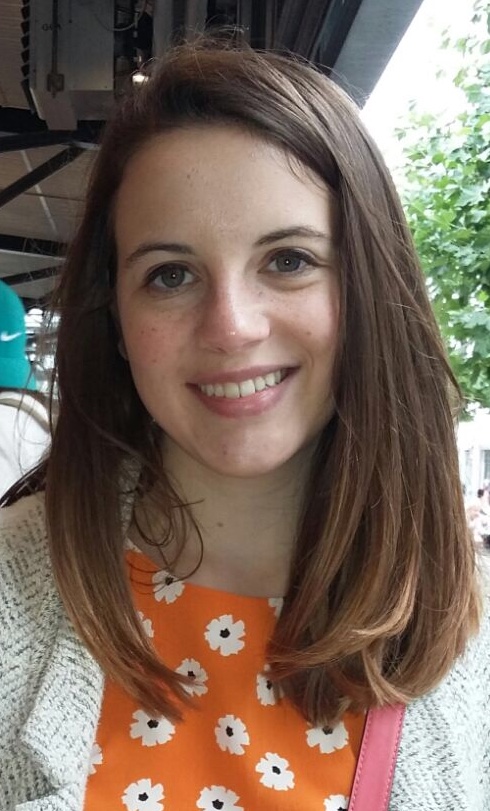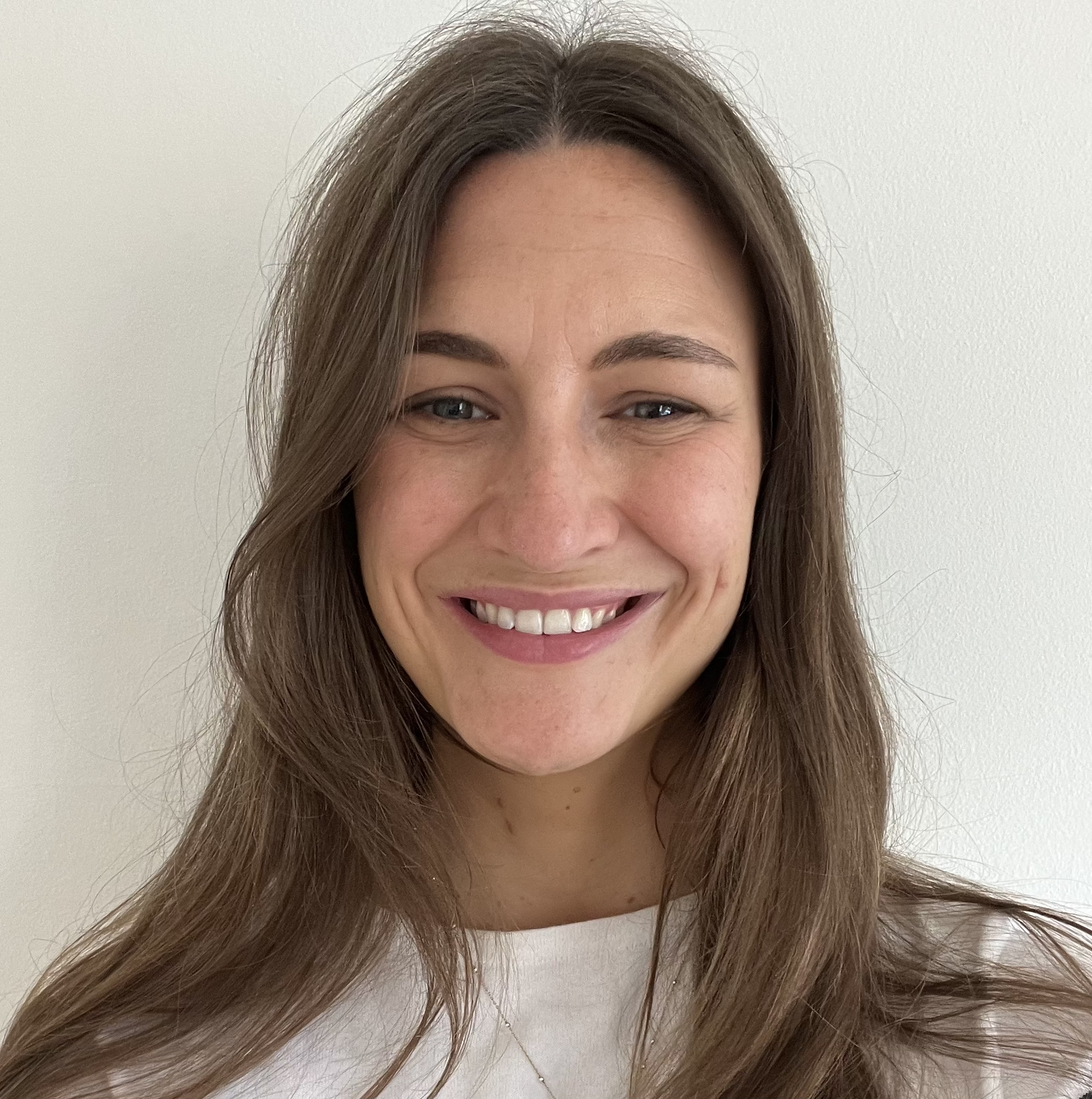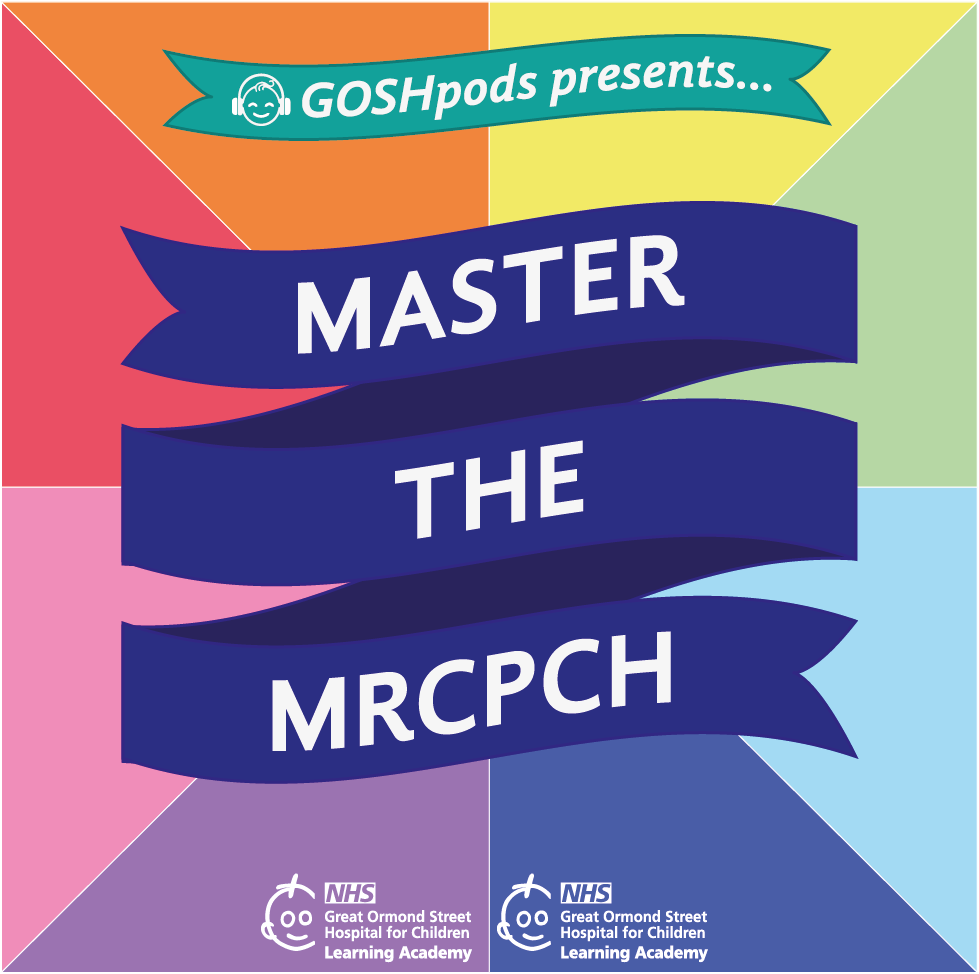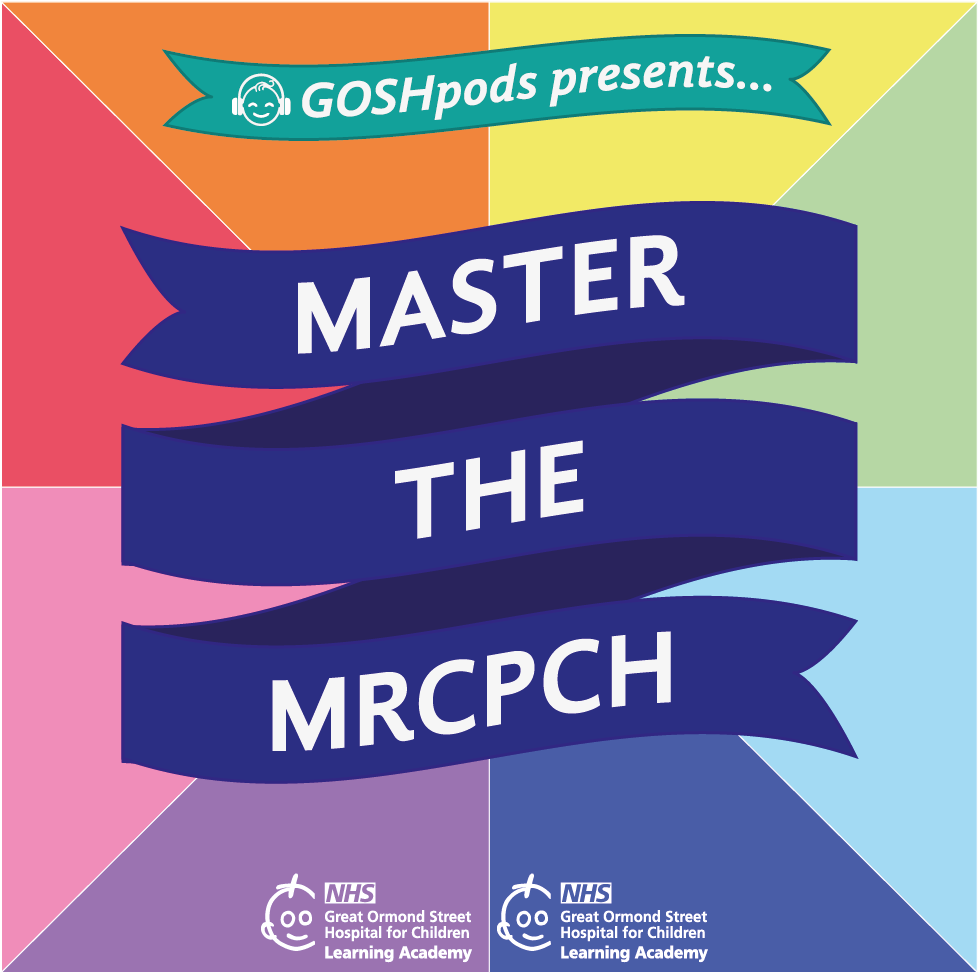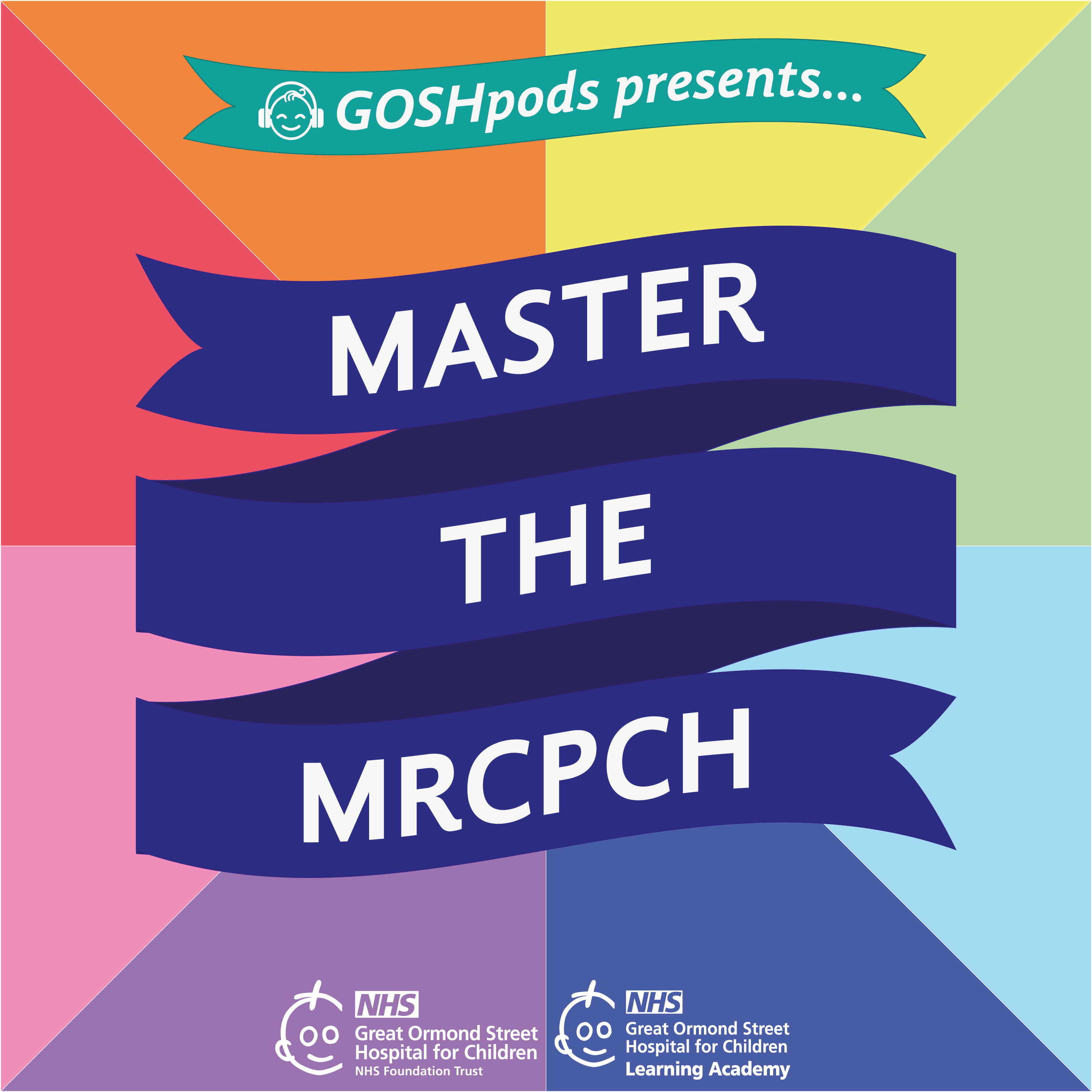This Podcast is brought to you by the GOSH Learning Academy.
SA: Hello, and welcome to Master the MRCPCH. In this series, we tap into the expertise here at Great Ormond Street Hospital to give you an overview of a topic on the RCPCH exam curriculum. So whether you're revising for an exam or just brushing up on a need to know topic. Hopefully this podcast can give you the information that you need.
I'm Dr. Sarah Ahmed, a paediatric registrar and the current digital learning education fellow here at GOSH.
In today's episode, we're going to be talking with Professor Juan Kaski about cardiomyopathies. Professor Kaski is a consultant paediatric cardiologist at Great Ormond Street Hospital and the Director of the Inherited Cardiovascular Diseases Unit at GOSH.
Cardiomyopathies map to the cardiology section of the exam curriculum.
This is part two of our episodes on cardiomyopathy. In part one, we discussed definitions, epidemiology and causes. In today's episode we're going to go over the main types of cardiomyopathy covering dilated cardiomyopathy, hypertrophic cardiomyopathy and restrictive cardiomyopathy.
Professor Kaski previously recorded an episode for us on hypertrophic cardiomyopathy, where we go into far more detail than we're gonna cover here. Do be sure to check that out. You can find it on the GOSHpod's Practicing Paediatric series where we do some real deep dives into specialist conditions that we treat at GOSH.
Juan, thank you for joining me for part two. Should we go over some of the different types of cardiomyopathy in a bit more detail? Can we start with dilated cardiomyopathy? Can you tell us a little bit more about what it is and what causes it?
JK: So dilated cardiomyopathy is essentially characterized by unexplained left ventricular dilatation, so often wall thinning, often with impaired, in fact, almost always with impaired systolic function, so dilated, poorly functioning left ventricle. It's the most common of the cardiomyopathy subtypes in the paediatric population, unlike in adults where hypertrophic cardiomyopathy is more common and it's extremely heterogeneous, particularly in the paediatric population. So, there are a number of important genetic causes, again, monogenic causes, things like mutations in cardiac sarcomere protein genes, in the titin gene. There are other genetic causes that are associated with extracardiac manifestations. So again, Duchenne Muscular Dystrophy is an example of that. A number of syndromic conditions and other storage disorders as well. But also non genetic causes are an important aetiological sort of factor in dilated cardiomyopathy. So particularly myocarditis. So viral myocarditis, which is pretty common in the paediatric population, can sometimes cause cardiomyopathy, can lead to a dilated cardiomyopathy. In some cases that will be because there's an underlying genetic predisposition and the initial presentation is myocarditic, but in other cases it really is a myocarditis that doesn't recover and, and leads to a dilated cardiomyopathy.
And as I mentioned before things like anthracycline. Drugs toxicity can also cause dilated cardiomyopathy several years after those drugs have been used. It’s also very heterogeneous in terms of how it can present, so it can present with acute heart failure symptoms, or it can present in a much more sort of slow, indolent way perhaps with sort of mild symptoms initially, or as an incidental finding with an abnormal ECG or an abnormal cardiac shadow on a chest x ray, for instance. And increasingly we're also picking up children with dilated cardiomyopathy as part of family screening. So that's something that we've known for a little while that there are important genetic causes of dilated cardiomyopathy but the international recommendations until very recently hadn't really recommended screening in younger patients because there was this suggestion that perhaps these conditions didn't develop in childhood, that they only developed in the late teenage years or early adult years. But we know that's actually not, that's not the case. So, increasingly now we're identifying cases of dilated cardiomyopathy in younger children as a result of family screening.
SA: And once you suspect someone's got dilated cardiomyopathy how would you go about treating that?
JK: Yeah, so this goes back to what we were talking about before, in terms of the importance of an underlying diagnosis and reaching an underlying specific diagnosis, because the management will be slightly different depending on what underlying causes. There are general management principles anybody with dilated cardiomyopathy. So, there are symptomatic treatments. So, individuals who have signs and symptoms of congestive cardiac failure will be treated with diuretics. There are drugs that we use to try to prevent adverse cardiac remodelling or to slow down adverse cardiac remodelling over a slightly longer time period. Many of these are extrapolated from adult data, but there are some paediatric data emerging, but things like ACE inhibitors, beta blockers, mineralocorticoid antagonists, particularly spironolactone and new classes of drugs that are, that are currently undergoing clinical trials in the paediatric population, but we, which in adult clinical trials data have been extremely beneficial in many patients with dilated cardiomyopathy. So SGLT2 inhibitors, for example. So that's the sort of generic management.
But then for some patients, there will be very specific disease treatments. So, for Duchenne there's the prospect now of, of exon skipping, so gene based therapies, for instance. For some of the dilated cardiomyopathies that are associated with an increased risk of ventricular arrhythmia and sudden cardiac death, for instance, patients with mutations in filamine C or in lamin, sudden death risk stratification is a crucial part of the management. So identifying which patients would benefit from implantation of a defibrillator of an ICD is a crucial part of management as well. And there are new gene based therapies and small molecule therapies that are emerging all the time for other types of genetic dilated cardiomyopathies.
SA: And does the prognosis depend on the cause of the dilated cardiomyopathy?
JK: Yeah, very, very much so. So there are really nice data from international registries that shows a clear difference in prognosis, depending on the underlying cause. So, for example some of the monogenic, causes for dilated cardiomyopathy have a slightly better prognosis, for example, than some of the metabolic cardiomyopathies. So, yeah, there's a…knowledge of the underlying aetiology is really, really important in terms of prognostication as well.
SA: It really does highlight, doesn't it, the importance of getting the diagnosis pinned down.
JK: Absolutely.
SA: Let's move on to talk about hypertrophic cardiomyopathy. So we've already done a whole podcast episode about this. And if people want to go listen to that, you can find it on the GOSHpod stream. But can you give us a bit of an overview about hypertrophic cardiomyopathy?
JK: Yeah, so hypertrophic cardiomyopathy is characterized by left ventricular hypertrophy. Again, that isn't solely explained by other things like hypertension, valve disease, etc. It is thought to be the second most common cause of cardiomyopathy or type of cardiomyopathy in the paediatric population. But part of that just may be because of under diagnosis in the paediatric population. And most cases, about 60 or 70 percent of cases in the paediatric population are genetic and that are caused by mutations in the sarcomere protein genes. So these are genes that are responsible for the development of the cardiac myocardium, essentially. So, no extra cardiac manifestations. But again, as with dilated cardiomyopathy, there are important non sarcomeric causes to identify, particularly in, in the younger paediatric population. So particularly in infancy and that includes things like malformation syndromes, particularly Noonan syndrome and related disorders. Inborn errors of metabolism so things like Pompeii Disease or Danone Disease. And neuromuscular disease like, like Friedreich's ataxia in particular. Again the presentation can be very variable. So some patients will present with symptoms and there will be symptoms of breathlessness or chest pain, palpitation, syncope, sudden death. Or out of hospital cardiac arrest can be the initial presentation in some patients with hypertrophic cardiomyopathy. But it can also be picked up incidentally through the detection of a murmur or an abnormal ECG, for instance and again, and more so than with dilated cardiomyopathy, family screening is, is often a way in which we pick these these patients up.
The, the sort of treatment of hypertrophic cardiomyopathy essentially has sort of three different aspects to it. So there's treatments of symptoms. So if patients are asymptomatic, we tend not to offer any treatment. If they have symptoms, we have to work out why they're symptomatic. And it's usually, it's either because they have resting or provocable left ventricular outflow tract obstruction, or because of diastolic dysfunction, or occasionally because of microvascular ischemia. And if they need treatment for that, that's almost always pharmacological. Beta blockers, calcium channel blockers, disopiramide in combination with beta blockers is a good way of treating symptoms related to outflow tract obstruction. And occasionally if maximal medical therapy fails to control symptoms then there's the option of surgery. So a surgical myectomy. So shave a little bit muscle out to reduce the left ventricular outflow tract obstruction. So that's 1 aspect of it. The 2nd aspect is prevention of disease related complications and that's particularly in the pediatric population, it relates to sudden cardiac death. So we have ways of identifying which children are at a higher risk of sudden cardiac death and would benefit from implantation of an ICD. And then the third aspect of it is, is around family screening. So it's, it's identifying that it's also more dominant generally, and there are many other people in the family potentially at risk. And so thinking about that aspect is, is crucial.
SA: And does prognosis again, depend on what causes it?
JK: Yeah, absolutely. Very much. So again, really good data from international registries, also from our UK cohorts to show that patients with metabolic hypertrophic cardiomyopathy, so inborn errors of metabolism in particular, but also syndromic hypertrophic cardiomyopathy, particularly when it's diagnosed in the first year of life, have a significantly worse prognosis, a very high sort of rate of mortality, often heart failure related mortality, rather than sudden cardiac death at that age. Usually in that sort of first 2 years of life, and then for the survivors, things sort of settle, settle down. Whereas for the more common type of hypertrophic cardiomyopathy, so sarcomeric disease, the prognosis is much, much more benign.
*trumpet noises*
SA: Did you know that GOSH runs mock exams for the MRCPCH? Great Ormond Street has been running mock exams since June 2016. The mock is based on the MRCPCH clinical examination curriculum, and candidates are able to get the full experience and conditions of a real exam setting, and gain valuable feedback on their performance.
To find out more go to the GOSH website and search MRCPCH exams.
SA: And let's end by talking a little bit about restrictive cardiomyopathy. So what separates restrictive cardiomyopathy from dilated and hypertrophic?
JK: Yeah, so restrictive cardiomyopathy, it's, it's super rare. It's by far the rarest of all the cardiomyopathy subtypes. And it's probably the only one that's not classified morphologically, but rather functionally. So the definition of restricted cardiomyopathy is, essentially a heart that's not significantly dilated, it's not significantly hypertrophy, but where there's restrictive physiology, so severe diastolic dysfunction. Morphologically, what you tend to see when you look at the heart on an echo, for example, are very enlarged atria. So there's atrial dilatation, and that's because of the restrictive physiology. It's again, very heterogeneous in its causes, but we think that about a third of cases are caused by mutations in the sarcomere protein genes, the same genes that cause hypertrophic cardiomyopathy particularly, but also some cases of dilated cardiomyopathy will also cause restrictive cardiomyopathy. And then there are a number of other very rare causes of restrictive cardiomyopathy.
The true restrictive, important to distinguish between true restrictive cardiomyopathy and other cardiomyopathy subtypes like dilated or hypertrophic that can also have a restrictive physiology.
SA: Okay.
JK: Those two groups are very different because the prognosis is very different. So patients with a true restrictive cardiomyopathy have an extremely poor prognosis. So a very high rate of heart failure related death or requirement for transplantation. And with restrictive cardiomyopathy, it's really important that they're followed up very, very closely and that they have cardiac catheterization performed very closely to measure pulmonary vascular resistance, because there's a risk that their pulmonary vascular pressures can rise very, very quickly and become irreversible and then they're no longer eligible for cardiac transplantation.
SA: Okay.
JK: So, so they require very close monitoring. And really the prognosis is, is very, very poor for, without cardiac transplantation for restrictive cardiomyopathy.
For patients with hypertrophic or dilated cardiomyopathy who have a restrictive physiology it's a much slower process. And so the prognosis is not quite as, as bad as for pure restrictive cardiomyopathy.
SA: I don't think I fully appreciated when I started this, that the different types of cardiomyopathy really describe the pathophysiology almost, don't they? They describe how it presents and they really don't describe what causes it. And as you've really well explained, it really is about having that in the back of your mind, making that initial kind of assessment and then going on to specifically diagnose the different bits.
JK: Yeah, absolutely. I so we said at the beginning that these different cardiomyopathy subtypes are just a description of what, you see when you look at the heart. And I think in the past, some people still do consider them the final diagnosis, but it really, really isn't as I said before, it's the start of a, diagnostic process. And it really matters to arrive at a much more precise, specific aetiological diagnosis. Sometimes you don't. So sometimes they really are idiopathic and we are no further forward. But, but it, but it's really important to make that attempt to reach a, reach a specific diagnosis.
SA: Yeah, absolutely. Let's round up and let's end with some quick fire questions. So, firstly, where might you expect cardiomyopathy to pop up in the paediatric exams?
JK: Yeah, that's a great question. You may encounter a patient with a, with hypertrophic cardiomyopathy, particularly, but possibly also dilated but, but you're more likely, I think, to encounter a patient with hypertrophic cardiomyopathy in a, in a practical clinical exam, in your sort of clinical bits of the MRCPCH because they may have very good clinical signs. So if they have left ventricular outflow tract obstruction they will have a classic ejection systolic murmur at the left upper sternal edge that varies with posture, so if you get them to squat and then stand up, that murmur will get louder when they, when they stand up. So, so you might encounter a patient in the clinicals with, with hypertrophic cardiomyopathy. Dilated cardiomyopathy is slightly less likely because any clinical signs they have will likely be related to heart failure and they'll probably be too unwell to be in an exam. But you might get a patient with Duchenne muscular dystrophy, for example, or Becker muscular dystrophy. And then the question might be around the sort of cardiac manifestations in an individual with signs of neuromuscular disease, for instance.
In terms of part one questions, I guess you could get , some questions around the management of heart failure. So what drugs you might use in patients with heart failure. You might get some questions around a pharmacological management of obstructive hypertrophic cardiomyopathy. You might get some questions around the aetiology. of different cardiomyopathies. So an awareness of the fact that inborn errors of metabolism can cause cardiomyopathies or that malformation syndromes, things like Noonan syndrome will be associated with particular subtypes of cardiomyopathy.
SA: You might even get an ECG in the part two where the changes on the ECG, and the question is what kind of differentials are you thinking about? I think in the clinicals it's about also when you're talking about differentials, remembering that cardiomyopathy is a differential that you should be thinking about.
JK: Yeah, absolutely. I think, I think that's a really key thing, isn't it? Just have at the back of your mind always the possibility that the patient or the clinical signs that you're eliciting could be related to, to a cardiomyopathy.
SA: Okay, so second question. Are there any useful resources that you would recommend?
JK: So there are really good resources available online from the British Heart Foundation and Cardiomyopathy UK that that provide really good information for patients and families, but actually really quite useful information for clinicians as well.
The 2023 European Society of Cardiology guidelines management of cardiomyopathies are an extensive document with lots of clinical practice recommendations and importantly, actually applicable to both children and adults. So that was one of the things that we were very keen when we developed those guidelines was that it wasn't just for adults, but actually that the information in that applies to children as well. So that's a really good sort of source of information. And then there are some sort of good review articles that that have been published in the last few years that summarize different aspects of cardiomyopathies. I think there was a there was a sort of a series of articles in Frontiers that had papers on metabolic cardiomyopathies, on syndromic cardiomyopathies,
SA: There's also a great article that I found that you edited in Frontiers that I'll link down below. Finally, what are your takeaway learning points?
JK: The main takeaway learning point, I think, is this idea that you should think about the possibility of a cardiomyopathy when you encounter a patient with cardiac signs, symptoms that perhaps aren't diagnostic for something in particular, but just having that possibility of a cardiomyopathy in your mind is part of the differential diagnosis. I think that's the first thing.
And then the second takeaway, I think, is related to the fact that the description of the cardiomyopathy, so hypertrophic, dilated, whatever isn't the diagnosis. It's a really important start. But don't stop there. Keep looking for the underlying cause and take into account information from all the different sort of sources and investigations that are available to you because getting a precise diagnosis is really important for the families to give them an answer, but to identify also other people in the family who might be at risk, but also increasingly because it, the treatment may be different depending on what the underlying causes.
SA: Absolutely. I completely agree. Juan, thank you so very much for what's been a really concise, but really descriptive overview of something that I just don't think we think about enough. So thank you very much.
JK: That's ok, a pleasure as always.
SA: Thank you for listening to this episode of Master the MRCPCH. We would love to get your feedback on the podcast and any ideas you may have for future episodes. You can find link to the feedback page in the episode description, or email us at digital
[email protected] If you want to find out more about the work of the GOSH Learning Academy, you can find us on social media, on Twitter, Instagram, and LinkedIn. You can also visit our
[email protected] and Search Learning Academy. We have lots of exciting new podcasts coming soon. So make sure you're subscribed wherever you get your podcasts. We hope you enjoy this episode and we'll see you next time. Goodbye.
